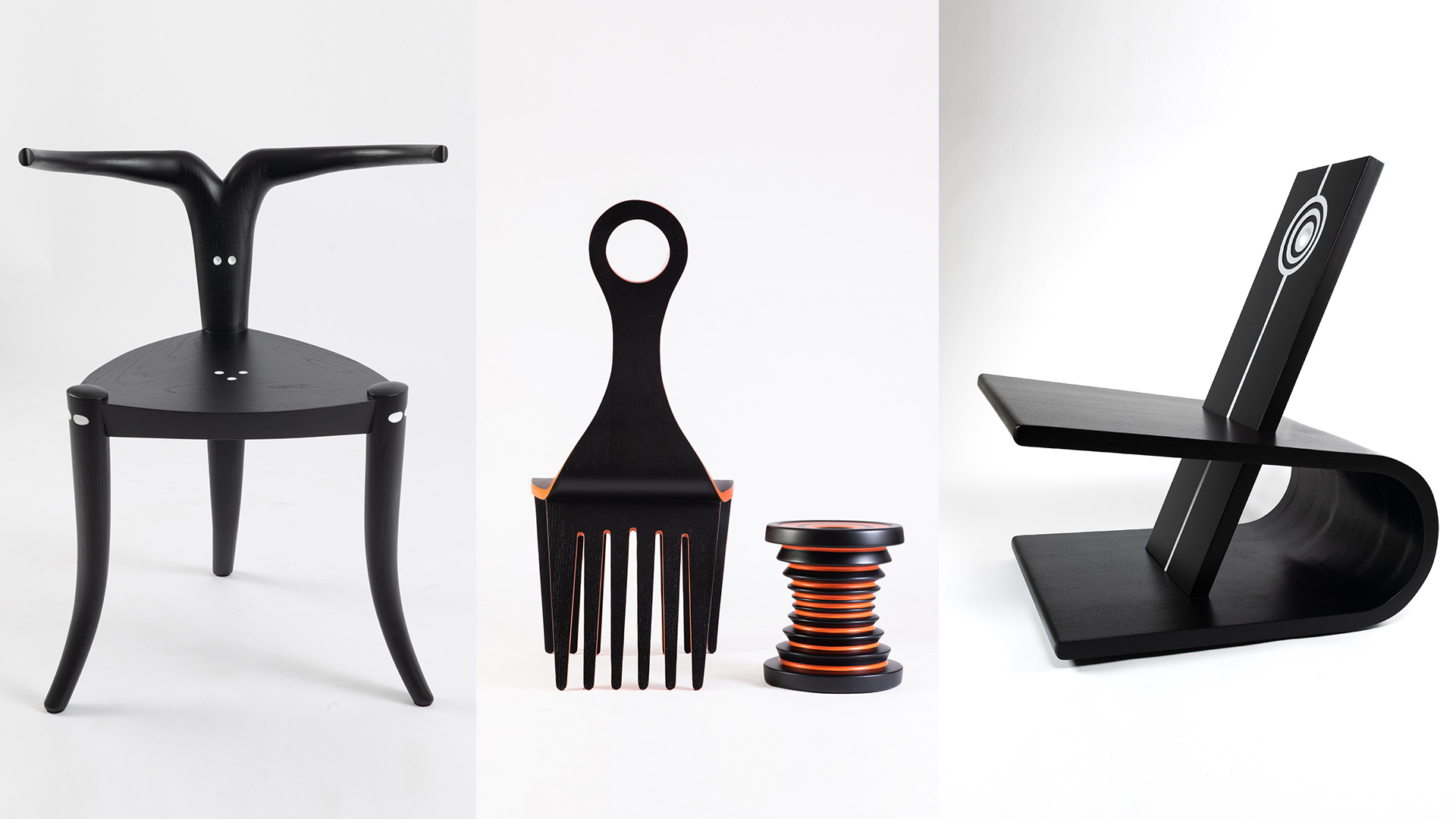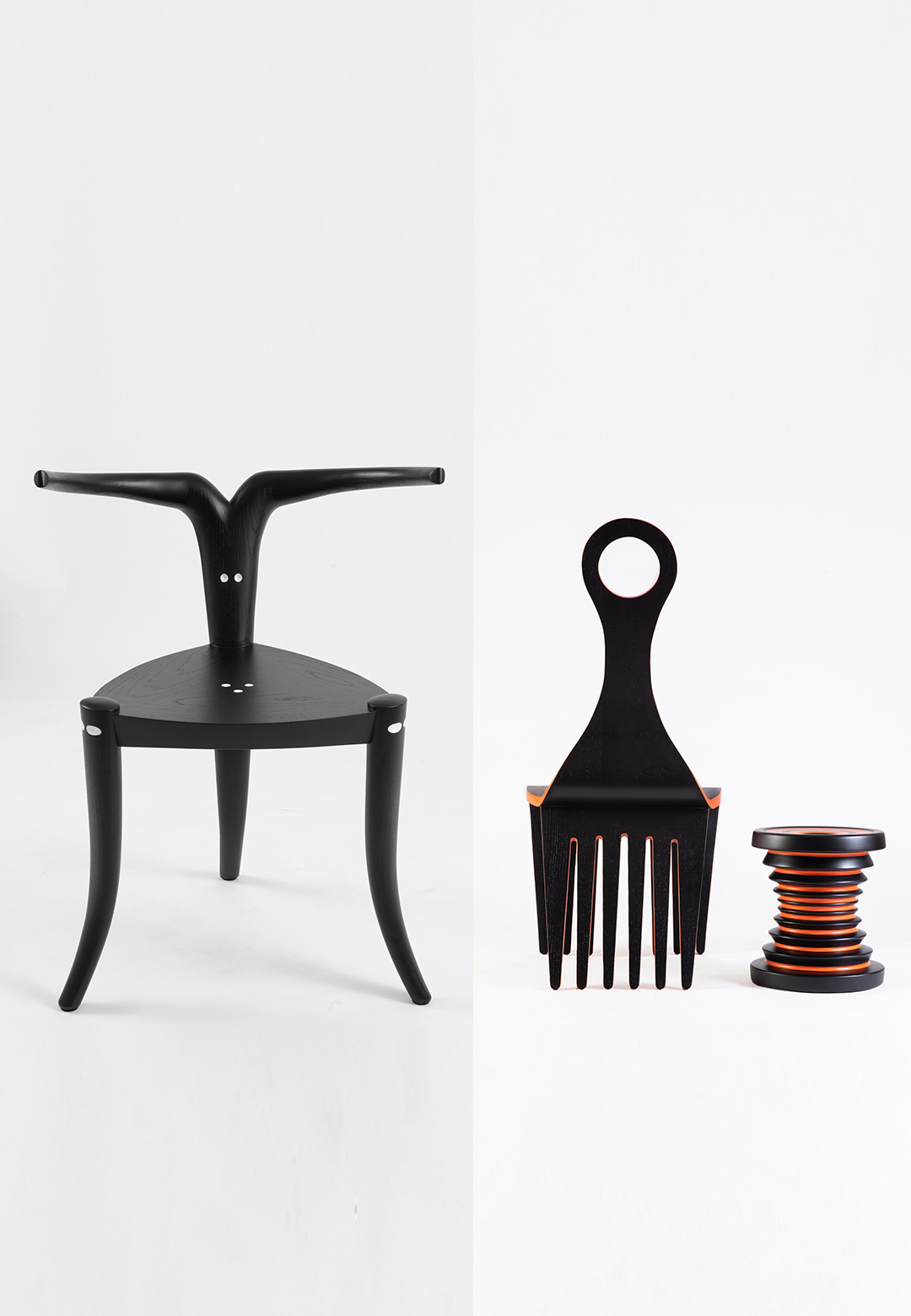African design has recurrently been deemed synonymous with masks and leopard skin, or sullied by interpretations of non-African designers who had visited the continent. For too long, this continent stowed away under the category of ‘other,’ has been almost unfairly represented with its design heritage being reduced to curiosity and craft, as opposed to an equal contributor in the design world as a whole. The emergence of a contemporary African aesthetic on the global design tapestry over the past decade is a consequence of a growing acknowledgement of Africa, its rich diversity and its global relevance. Eschewing the myopic perception of Africa that pervades beyond its borders, the work by young creators exudes a fresh confidence and epitomises the multifaceted world view of this generation of designers.
“I aspire to change the world’s perception of African design while exploring contemporary forms. I want to make sure the canon changes,” says Jomo Tariku, one such design force who strives towards changing the stereotypical notions attached to African design. The Ethiopian-American designer and artist renowned for his artistic yet functional furniture that is informed by his roots, interweaves his experience of Africa’s diverse culture, historical structures, architecture, traditional furniture, colours, artefacts, landscapes, wildlife, and hair styles into a wide variety of artistic creations. Post joining forces with Wexler Gallery, a contemporary art and design gallery based in Philadelphia and New York, the furniture and industrial designer breaths life into an ensemble of exclusive and high-end seating designs: Meedo Chair, Nyala Chair, Qwanta Totem Chair and Mukecha Table/Stool.
The lucid insinuations pointing towards African heritage in his furniture design can be traced back to his childhood days; his passion and curiosity was piqued by the eclectic art, furniture and souvenirs his parents accumulated during their travels across Africa and beyond. From being a young graduate in industrial design with a thesis on contemporary African furniture, to being a widely published and recognised designer, Tariku’s journey and oeuvre is underpinned by a reverence for his rich culture. His work has been acquired by major museums including the Metropolitan Museum of Art in New York and the Los Angeles County Museum of Art and exhibited globally. Gaining ample traction in the past few years, Tariku was even tapped by the makers of 2022 Marvel film Wakanda Forever to get their hands on his Afrofuturist furniture to create the pan-African set design of the film—an honour that was beyond Tariku’s imagination.
The design of the Meedo Chair authentically references historic African objects—infusing the rich history of the Afro comb into the African tradition of a ceremonial seat emblematic of leadership, unity and kinship. “From the 6000-year-old afro comb from the Sudan until now, the afro comb is an essential daily companion to our lives,” the furniture designer notes. From the Black Power and Black is Beautiful movements, to rites of passage into adulthood in many African cultures, the Afro comb symbolises beauty, status, and dynamism—intangible attributes that are concretised in the chair design in ash black with orange edge trim.
Informed by the shy and elusive mountain antelope from the Bale Mountains of East Africa, the dexterously hand-carved armrests and legs of the Nyala Chair speak of the Nyala’s characteristic towering horns and robust hind legs. Conforming to the non-territorial nature of the Nyala, the chair design seamlessly melts into the design palette of contemporary spaces without losing its individuality. Finished in black, this exclusive edition is emblazoned with additional detailing in white acrylic emulating the white markings on the nose and eyes of the antelope.The Nyala chair partakes in the permanent collection of LACMA, Mint and Denver Art Museum.
The Qwanta Chair is the culmination of years of experimentation and evolution of the African birthing chair. It is an assembly of two pieces, put together by sliding the backrest into the base to achieve a stable structure without additional hardware. This rendition of the chair takes cues from the Gurage culture from Central Ethiopia and the swappable backrest totems found in many parts of Sub-saharan African countries. The chair is available with four reversible and interchangeable backrests that can shapeshift as wall art when not attached to the chair.
Donned in a similar colour palette as its companions, Mukecha is a contemporary manifestation of traditional African mortars of varying sizes used for grinding barley, wheat and other staple crops. Carved from locally available sturdy wood, the heavy mortar and pestle are used to prepare flour through a tedious and laborious process. Typically accompanied by synchronising singing, the women of the community carry the burden of this work. The Mukecha table design/ stool design is embellished with concentric orange rings hinting at the neck rings adorning bronze busts from The Kingdom of Benin.
Through his exploration of the depths of African culture, Tariku is defining a new design language of modern African-themed furniture design. His efforts catalyse the drive towards celebrating the diversity and layers within the design community—a movement in full swing with young designers aspiring to position the continent in a more accurate light. Contemporary African design is a dynamic dialogue with tradition and heritage, but it is also so much more; to confine it to our hampered understanding and narrow down its definition is absurd considering the multifariousness of people, cultures, languages and traditions the continent cradles. Strong voices that emanate from the global south, Tariku being one of them, are resonating in the creative community and the world alike—a reminder that design is a global language, and no one misses out.






 Sign in with email
Sign in with email










What do you think?